
Yerevan's citywide deployment of Clarity Node-S air quality sensors for construction-related environmental monitoring
170+ Node-S sensors are deployed across Yerevan, making it one of the most extensive city-run air quality sensor networks in Europe. The sensors are strategically placed, with a focus on construction.

Yerevan embraces air quality as a smart city priority
Yerevan, the capital of Armenia, is embracing smart-city innovations to improve livability and public health. The city’s Technology Management Center of Yerevan City (TMCYC) – founded in 2000 – spearheads IT strategy and digital transformation for the municipality. Tasked with modernizing urban services and implementing Yerevan’s “Smart City” strategy, TMCYC identified air pollution as a critical challenge threatening residents’ health and quality of life. Rapid urban growth and a construction boom were contributing to rising dust and particulate pollution, prompting city leaders to seek new solutions for cleaner air.
To tackle this issue, the Yerevan Mayor’s Office and TMCYC partnered with Clarity to deploy a cutting-edge air quality monitoring network. The goal was to continuously track fine particulate matter (PM2.5) levels around construction sites and other hotspots, providing real-time data to both officials and the public.
Under Manukyan’s leadership, the city has embraced the Clarity Node-S air quality sensors as a core tool for evidence-based environmental management. This case study explores how Yerevan implemented one of the world’s largest air monitoring networks and the impact it’s having on policy, compliance, and community awareness.
A growing city faces construction-related air pollution
By the early 2020s, Yerevan was experiencing a construction boom, with new high-rises and development sites spread across the city’s 12 districts. While positive for growth, this boom brought unintended consequences: dust and particulate pollution from construction activity began to noticeably degrade air quality. Residents increasingly voiced concerns about breathing hazards, and environmental experts warned that fine dust levels were exceeding health standards.
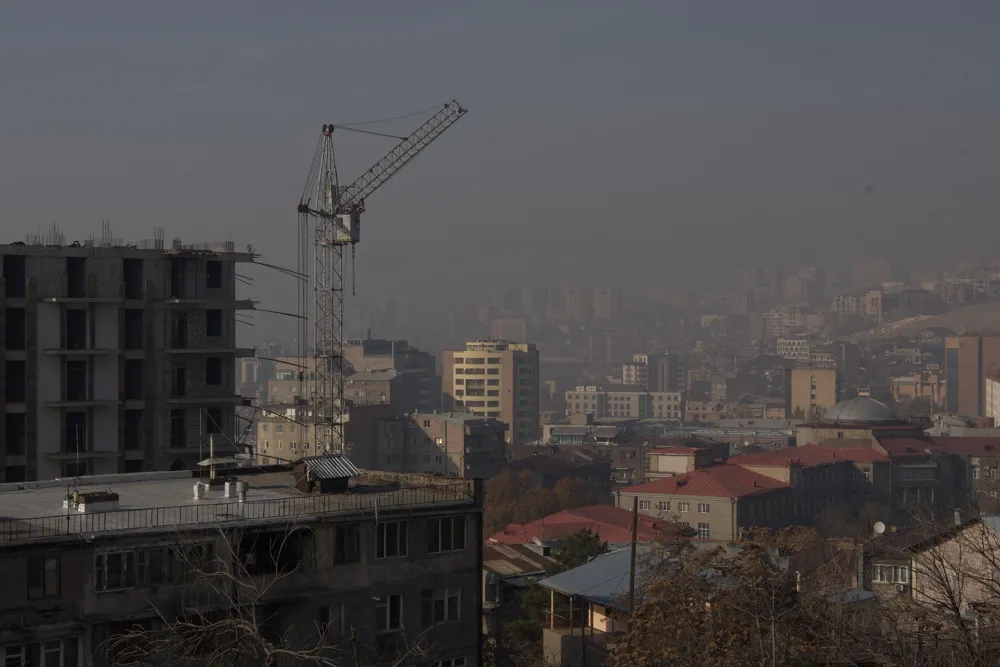
In response, Yerevan’s City Council (Council of Elders) passed a mandate requiring that air quality monitoring devices be installed at construction sites to control dust emissions. The directive, issued in September 2022, made it compulsory for each high-risk construction project to continuously monitor PM2.5 levels and ensure they remain within legal limits. After the City Council mandate, a decision was adopted by the Mayor of Yerevan, which defined the technical specifications for air pollution sensors. Following that, a market assessment was conducted to identify sensors that would meet the technical requirements outlined in the annex to the decision.
As a result, based on the price-to-quality ratio and taking into account the experience gained through the pilot project implemented with the Asian Development Bank Clarity’s equipment, an Agency Agreement was signed between TMCYC and Clarity on November 29, 2023. Under this agreement, TMCYC acquired the authority to represent Clarity’s services within the Republic of Armenia.
TMCYC was tasked with finding a technology solution to implement this new policy. The requirements were demanding: the monitoring system needed to continuously measure PM2.5 in real time, be accurate and reliable enough to enforce regulations, yet also be easy to deploy and operate in the field. Many construction sites lacked permanent power or data connectivity, so an off-grid, wireless air quality measurement solution was essential. Traditional monitoring stations – large, power-hungry, and expensive – were not practical to install at dozens of private construction sites. Yerevan needed a modern, scalable approach that could quickly cover the city’s numerous active construction projects.
In 2022, as a pilot effort, five Clarity Node-S air pollution sensors were procured for Yerevan under an Asian Development Bank-funded initiative (led by Mott MacDonald). These initial units allowed TMCYC and city environmental specialists to evaluate low-cost sensor technology in Yerevan’s conditions.
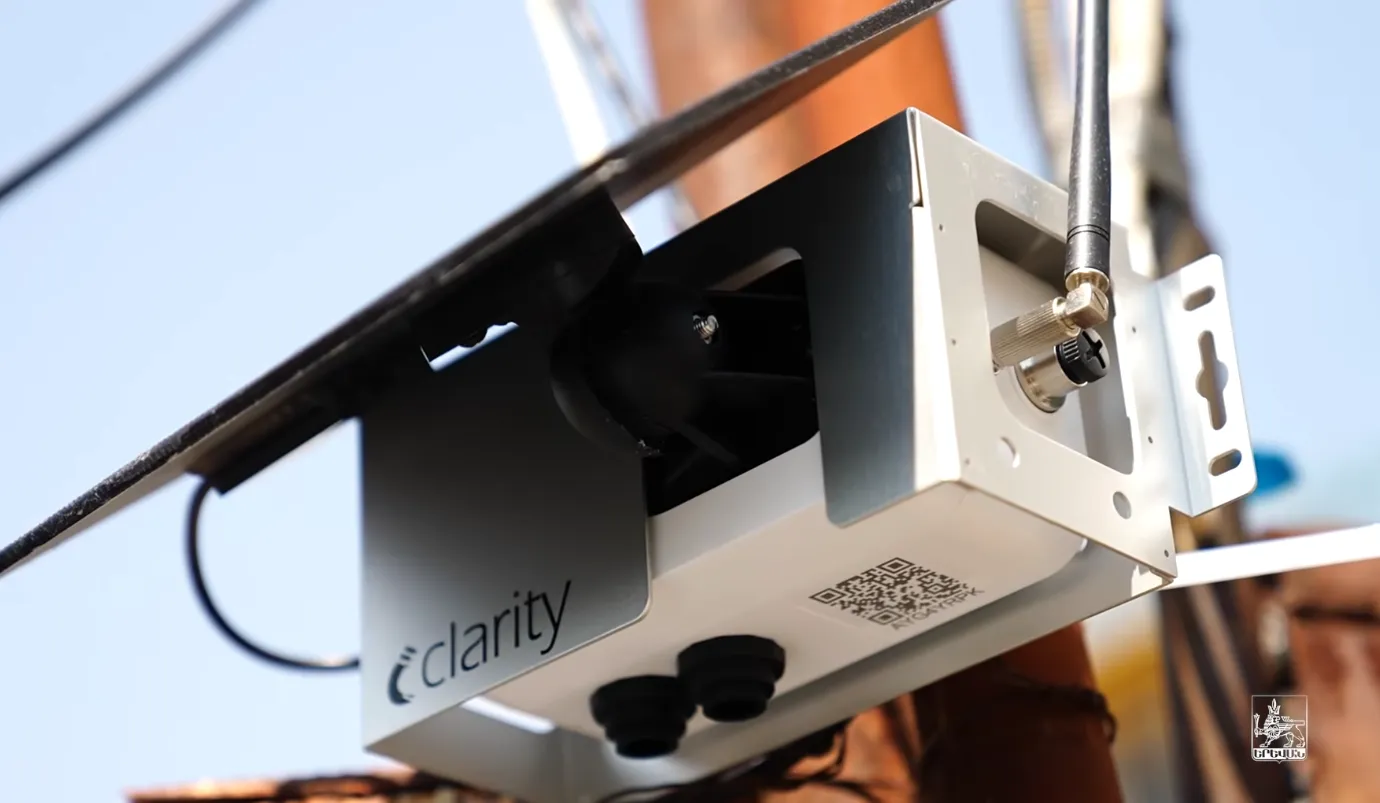
The Clarity Node-S, a solar-powered air quality monitor, stood out during the pilot. Its built-in solar panel and battery enabled truly wire-free operation – the devices could be mounted on poles or fences at construction perimeters without needing an external power source. Despite the absence of mains power, the sensors reliably streamed data over cellular networks. Installation was straightforward and fast, and the city found that even non-technical staff could get the units up and running with minimal training.
The pilot demonstrated that a network of compact Node-S sensors could meet Yerevan’s needs, where traditional methods had failed, and the city decided to expand its air quality monitoring program. After a 12-month evaluation of the pilot sensors, Yerevan’s city government officially selected Clarity’s Node‑S as its air quality monitoring solution of choice.
Deploying 170+ air quality sensors for citywide data
The city moved quickly from pilot to full-scale deployment. By late 2023, an initial wave of 84 Node-S air pollution monitors had been installed, and by the end of 2024, the network expanded to 151 active air quality sensors spanning all administrative districts.
Today, around 170 Node-S sensors are deployed across Yerevan, making it one of the most extensive city-run air quality sensor networks in Europe. The monitors are strategically placed, with a focus on construction site air quality measurement coverage – each major construction site in Yerevan is now equipped with at least two Node-S air quality sensors. This ensures that any excessive dust pollution can be immediately detected and attributed to a specific site, enabling the Municipality to enforce compliance if PM2.5 levels exceed legal thresholds.
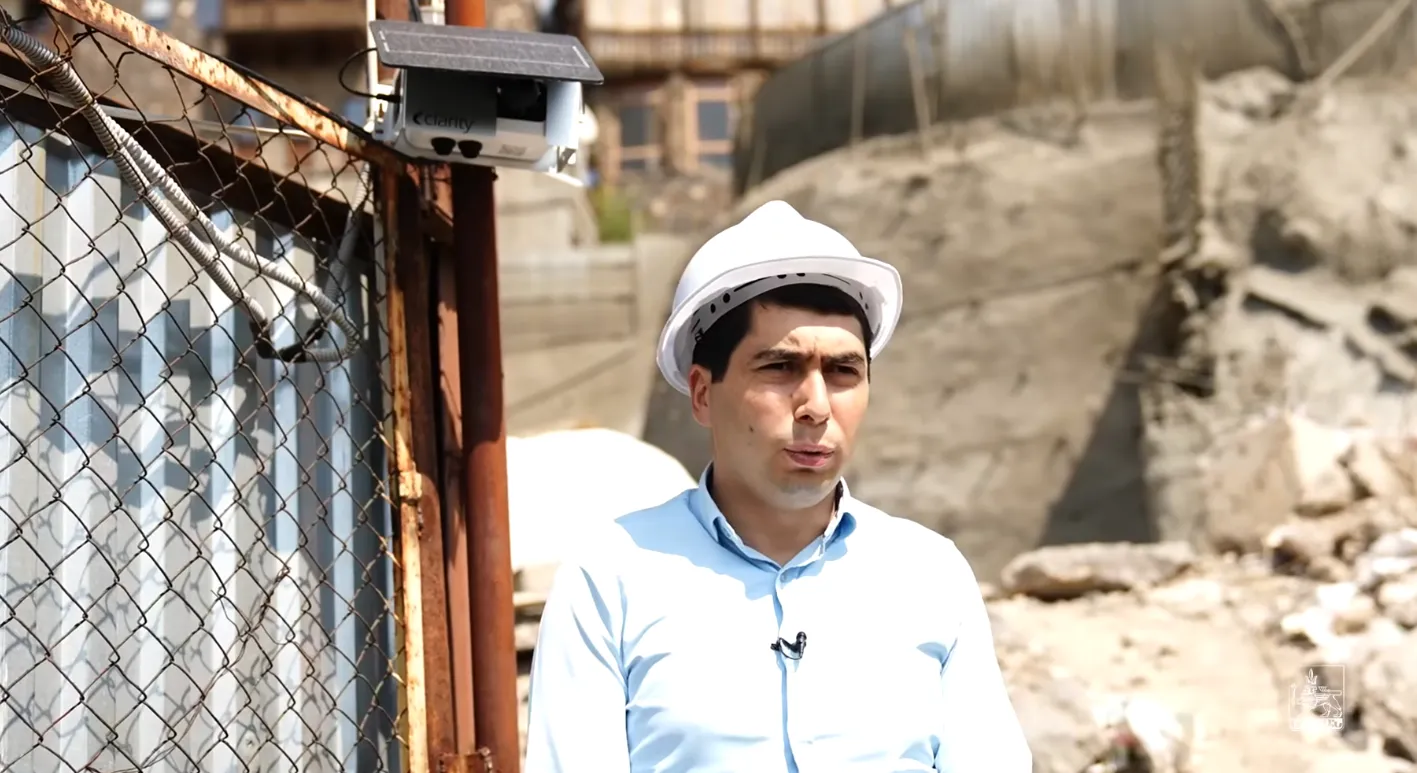
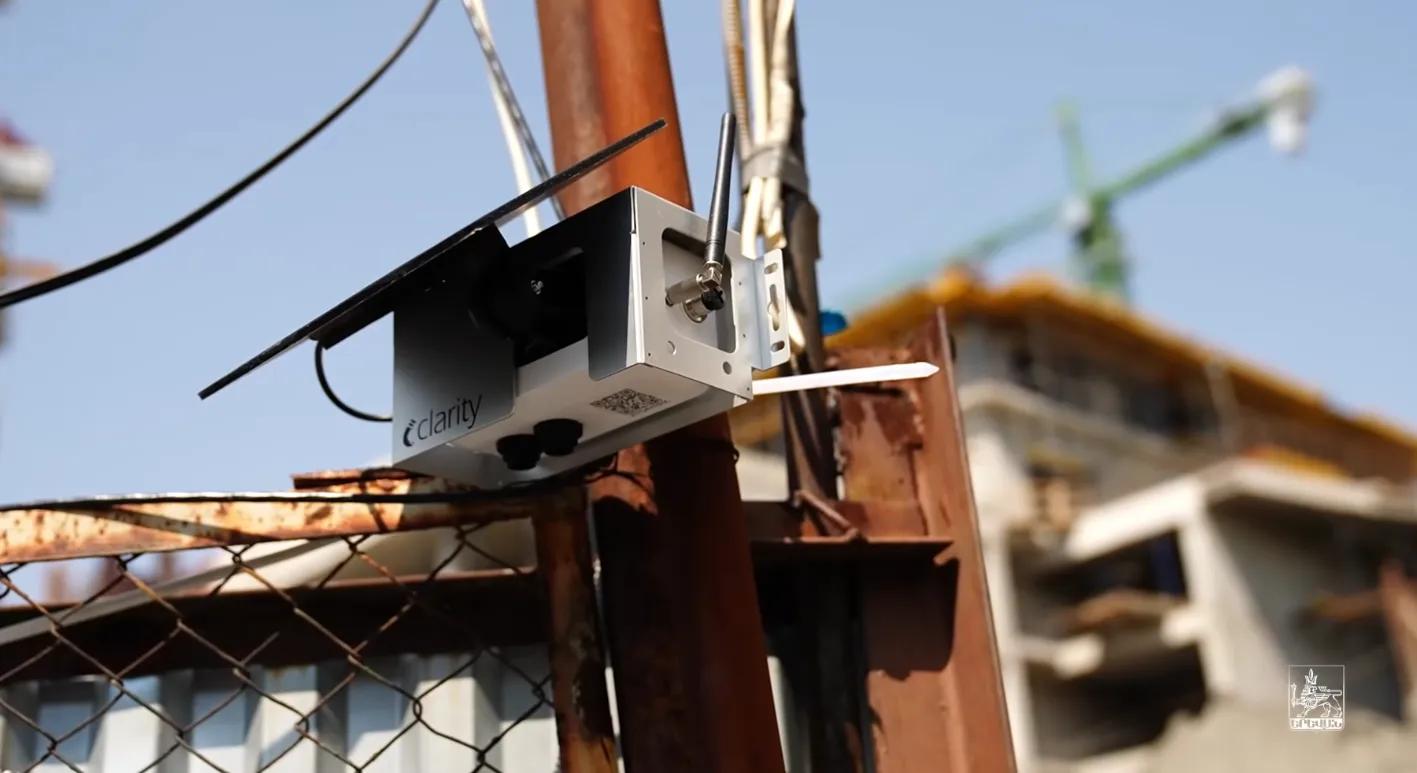
Clarity’s cloud-based platform and real-time air quality data capabilities have been fully integrated into Yerevan’s management systems. The city implemented a Geographic Information System (GIS) dashboard that aggregates all sensor readings onto an interactive map of Yerevan. Through this custom dashboard (built using Clarity’s air quality monitoring data API), officials can view live particulate levels at each site, receive automatic alerts when pollution spikes, and correlate data with specific construction activities or weather events.
Working with Clarity during the deployment and onboarding was a very pleasant and educational experience for us. Our team learned a great deal throughout the process. The Clarity dashboard and air quality alert system are intuitive and convenient for our staff, which has made their day-to-day operations much easier. We also find the platform’s data to be highly actionable, enabling us to respond quickly to air quality issues as they arise. The Clarity API integration was seamless, allowing us to feed the sensor data into our own city GIS platform for greater analysis and visualization."
— Gorik Avetisyan, Deputy Head of the Environmental Protection Department for the City of Yerevan
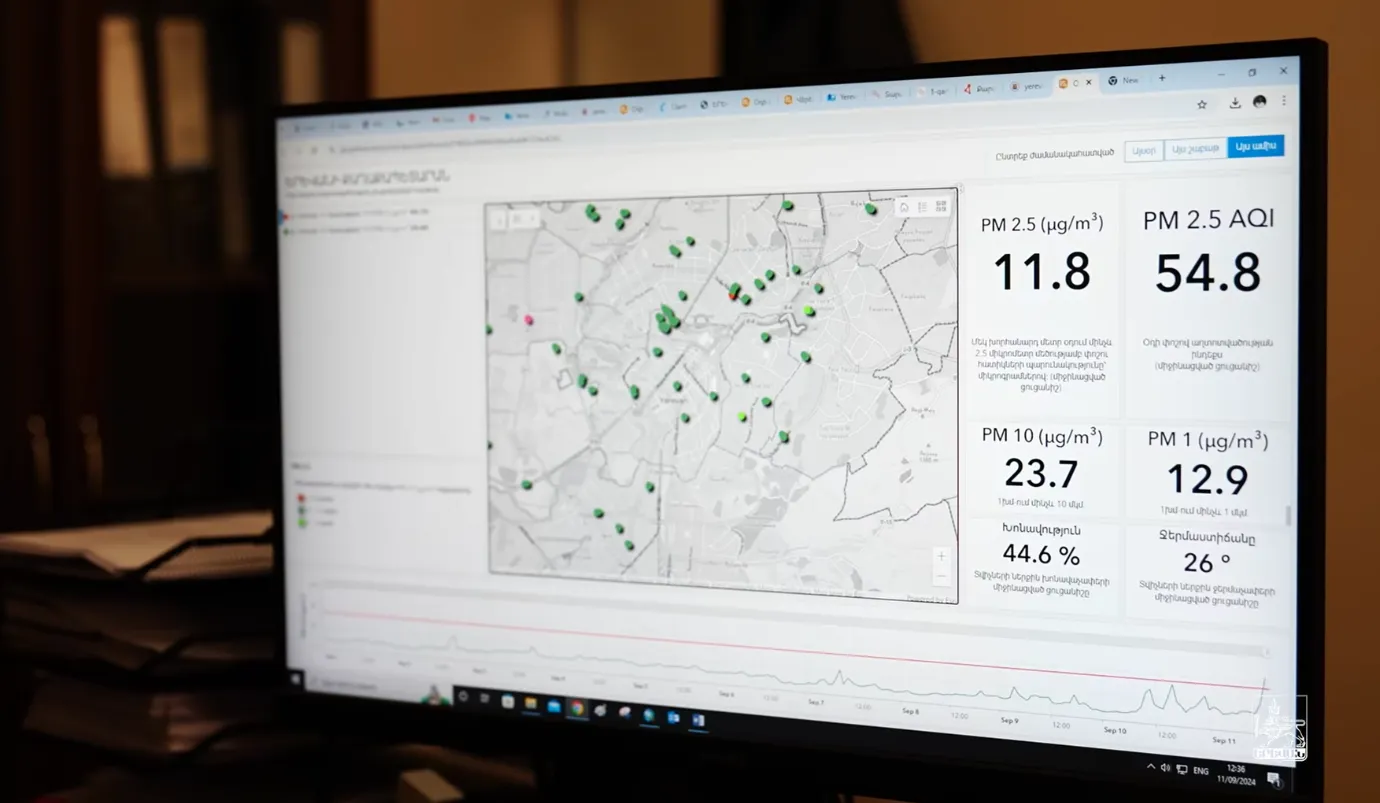
The data is also made publicly accessible online, allowing residents to see current air quality in their neighborhood at any time. This transparency has been crucial in building public trust – citizens know the city is actively monitoring pollution and holding developers accountable.

Key features of the Node-S that made Clarity’s air quality sensors a perfect fit for this construction air quality measurement project include:
- Solar-powered, wireless sensors: The Node-S devices require no external power or Wi-Fi, drawing energy from sunlight and sending data via cellular connection. This flexibility meant sensors could be installed directly at construction sites, even those without electricity, ensuring comprehensive coverage citywide. Installation involves simply mounting the unit on a pole or wall and turning it on – a process taking only minutes. The self-sufficient design minimizes maintenance and downtime, critical for continuous air quality monitoring.
- High accuracy and reliability: Over the trial period, the Node-S sensors proved their reliability in Yerevan’s environment, handling extreme weather, construction vibrations, and urban conditions while maintaining accurate readings. Clarity’s cloud includes automated calibration and quality control algorithms, which gave TMCYC confidence in the data. The system’s accuracy and low maintenance meant the city could depend on sensor alerts to trigger enforcement actions without constant manual validation.
- User-friendly software and API integration: Yerevan’s staff found the Clarity dashboard and API easy to work with. Data from all 170 sensors is unified on one platform, where custom thresholds can trigger email alerts to inspectors if dust concentrations surge. The city created role-based access so that environmental inspectors, urban planners, and even construction contractors have appropriate views of the data. This ease of use was praised by city officials, as it reduced the training burden and allowed a small team to manage a large network.
The system’s accuracy, reliability, and user-friendly interface have proven to be extremely effective tools for both decision-makers and the public. lt provides real-time, accessible data that enables informed policy development and empowers citizens with the knowledge to take action.”
– Sargis Manukyan, Director of the Technology Management Center of Yerevan City
TMCYC has been very happy with the air quality monitoring solution provided by the Clarity team, and wrote a thank you letter expressing their satisfaction.
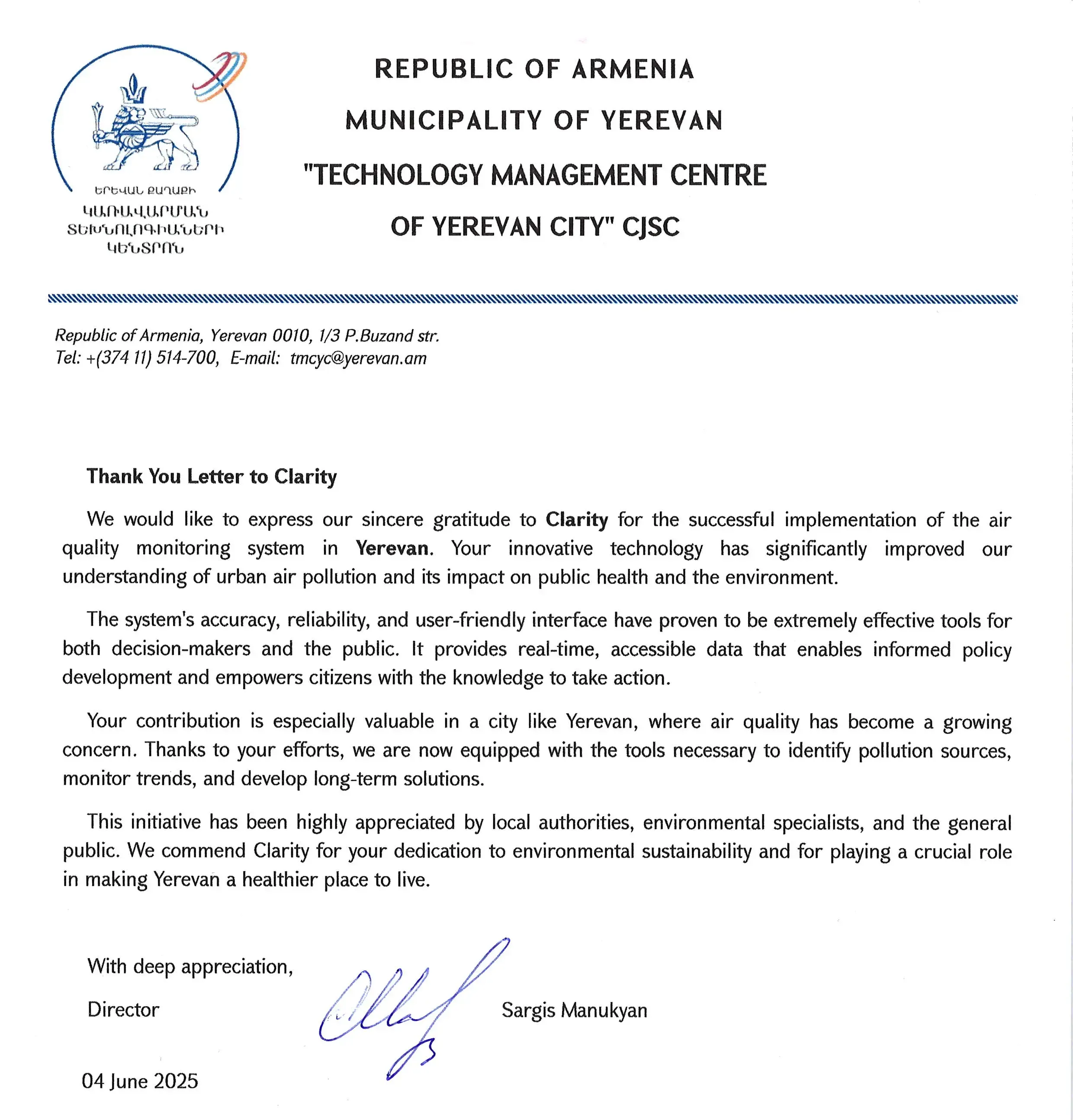
The immediate impact of real-time particulate matter air pollution tracking was a change in behavior and policy. Contractors quickly became aware that their sites were under constant watch. When PM2.5 levels approach the legal limit, the city’s alerts prompt proactive measures like deploying dust suppressants or halting work on particularly dusty tasks, even before official penalties are applied.
We were contacted by The Technology Management Center for Yerevan City (TMCYC) at the start of 2024 as they were looking into the feasibility of standardising the monitoring of dust from construction sites. The Environment Ministry for Yerevan had already been using some of the Clarity Node-S sensors as part of a small trial and they had recommended Clarity to TMCYC. The most important features required from the sensors was having reliable solar power, data uploaded to the cloud and ease of deployment. The Node-S was the perfect fit as it is solar powered as standard with cellular connectivity and the device is very easy to move around and deploy. This has allowed TMCYC and the Environment Ministry to quickly scale the monitoring of construction dust across the city of Yerevan allowing them to see if any individual construction sites are exceeding any agreed dust limits."
— Lee Swanson, Regional Account Manager for Europe & Africa at Clarity
Seeing concrete data on pollution also sparked broader policy discussions. Yerevan’s municipal government introduced new regulations for construction operations. Public disclosure of the sensor readings empowered community groups and environmental activists to demand better practices, creating a feedback loop that the city welcomed. What began as a technical deployment evolved into a catalyst for greater urban environmental accountability.
Positive impacts across the public and private sectors
The deployment of Clarity Node-S air pollution sensors in Yerevan has yielded tangible outcomes for city management, public health, and community engagement.
First and foremost, the city can now enforce air quality standards in a way that was not possible before. Whenever a sensor detects dust levels above the permissible limit, the Municipality’s Department of Environmental Protection is automatically notified. This has led to the activation of administrative enforcement during high-dust events – inspectors are dispatched to sites in violation, and developers have been cited and required to improve their dust control measures.
The very presence of continuous monitoring has had a deterrent effect: knowing that “someone is watching,” construction companies are more diligent about compliance. Yerevan’s environmental inspectors report that since the network went live, most large construction sites have complied with requirements. In short, data has given the city teeth to enforce its regulations.
The project has also significantly raised public awareness about air quality. The online dashboard, which displays live sensor readings across the city, has attracted thousands of visitors. Citizens can easily check air pollution levels in their district. What was once a hidden problem (airborne dust) became a mainstream topic, aligning both government and community on the need for action.
This easy access to information has empowered residents to take precautions on dusty days (such as wearing masks or keeping windows closed) and to report sites that appear to be violating rules. The heightened public scrutiny, in turn, pressured local authorities to respond more vigorously – a virtuous cycle that resulted in the City Council adopting stricter environmental ordinances for the construction sector.
After the installation of the equipment, public discussions about air pollution intensified. This led to new regulations and stricter administration, especially in the construction sector.”
– Sargis Manukyan, Director of the Technology Management Center of Yerevan City
City officials and staff have praised the collaboration with Clarity and the capacity building that came with it. TMCYC described the deployment experience as “very pleasant and educational.” Local technicians and environmental specialists gained hands-on training in installing IoT sensors, managing a cloud data platform, and interpreting air quality trends. This knowledge transfer means the city can sustain and even expand the network largely with in-house expertise. The Clarity team’s support – from initial site surveys to ongoing technical assistance – was frequently cited as a key success factor.
Within a year, Yerevan went from having virtually no automated air monitoring to running a 170-sensor smart network. The city’s rapid learning curve showcases how quickly capacity can be built when modern tools are paired with strong political will.
The user-friendly dashboards and analytics have also proven valuable for urban planning beyond just construction sites. Overall, the Node-S network has become an enabler of evidence-based decision-making in Yerevan’s environmental policy. The Mayor’s Office has positioned the city as a regional leader in smart environmental management, demonstrating how low-cost sensor technology can be scaled up to benefit an entire metropolis.
Future plans to modernize Yerevan’s air quality monitoring infrastructure
Yerevan’s success with construction-site air monitoring is just the beginning of a broader vision for environmental monitoring in the city. City leaders plan to leverage the flexible Clarity platform to expand into other pollutants and areas of concern. The next target is traffic emissions – the city is exploring adding NO₂ monitoring to select Node-S air quality sensors, given that vehicle exhaust is another major source of urban air pollution. Clarity’s air quality monitoring solution is inherently multi-parameter (it can support NO₂, CO, O₃, etc., with Add-on Modules), so Yerevan can upgrade the existing network without installing entirely new devices. This future-proofing was a key advantage of the Clarity solution, as it aligns with Yerevan’s goal to eventually have a continuous, automatic monitoring system covering all key pollutants.
Another planned expansion is to monitor dust emissions from local mining and quarrying sites on the outskirts of Yerevan. These activities can significantly impact air quality in adjacent neighborhoods. Using the experience gained at construction sites, the municipality will deploy sensors around mines to track dust spread. Data from these locations will help enforce environmental standards in the mining sector and ensure those industries take mitigation steps. By gradually extending the sensor network “step by step” into different domains, Yerevan aims to build a permanent, city-wide environmental monitoring infrastructure that can tackle pollution holistically.
This project has been a crucial step toward modernizing Yerevan’s air monitoring system. For a long time, our city relied on outdated, manual methods for measuring pollutants — for example, we even measured dust levels by physically weighing samples. Deploying Clarity’s automated sensors has helped us move into real-time monitoring and data-driven decision making. Building on this success, we plan to expand our air quality monitoring network to cover other areas of the city with significant pollution issues. In fact, in the near future we intend to install sensors to monitor dust emissions from Yerevan’s mining sites.
— Gorik Avetisyan, Deputy Head of the Environmental Protection Department for the City of Yerevan
City officials are eager to share their learnings with other cities looking to adopt similar technologies. Gorik Avetisyan, Deputy Head of Yerevan’s Department of Environmental Protection, emphasizes the importance of planning and strategy in replication efforts:
To any other city considering a similar approach, I would advise starting with a thorough feasibility study and developing a clear concept for your air monitoring system based on its results. Then implement your network according to that concept. This approach ensures the system is effective, sustainable, and aligned with a long-term clean air strategy."
— Gorik Avetisyan, Deputy Head of the Environmental Protection Department for the City of Yerevan
This forward-looking approach ensures that the air quality initiative is sustainable. Yerevan has wisely adopted a hybrid funding model for their air quality monitoring network: the city budget covers the sensors that serve as general “background” monitors, while private developers and businesses take on the costs of sensors that specifically monitor their activities (such as construction or industrial sites). This shared responsibility incentivizes polluters to minimize emissions (since they are essentially sponsoring the proof of their own compliance) and eases the financial burden on the city.
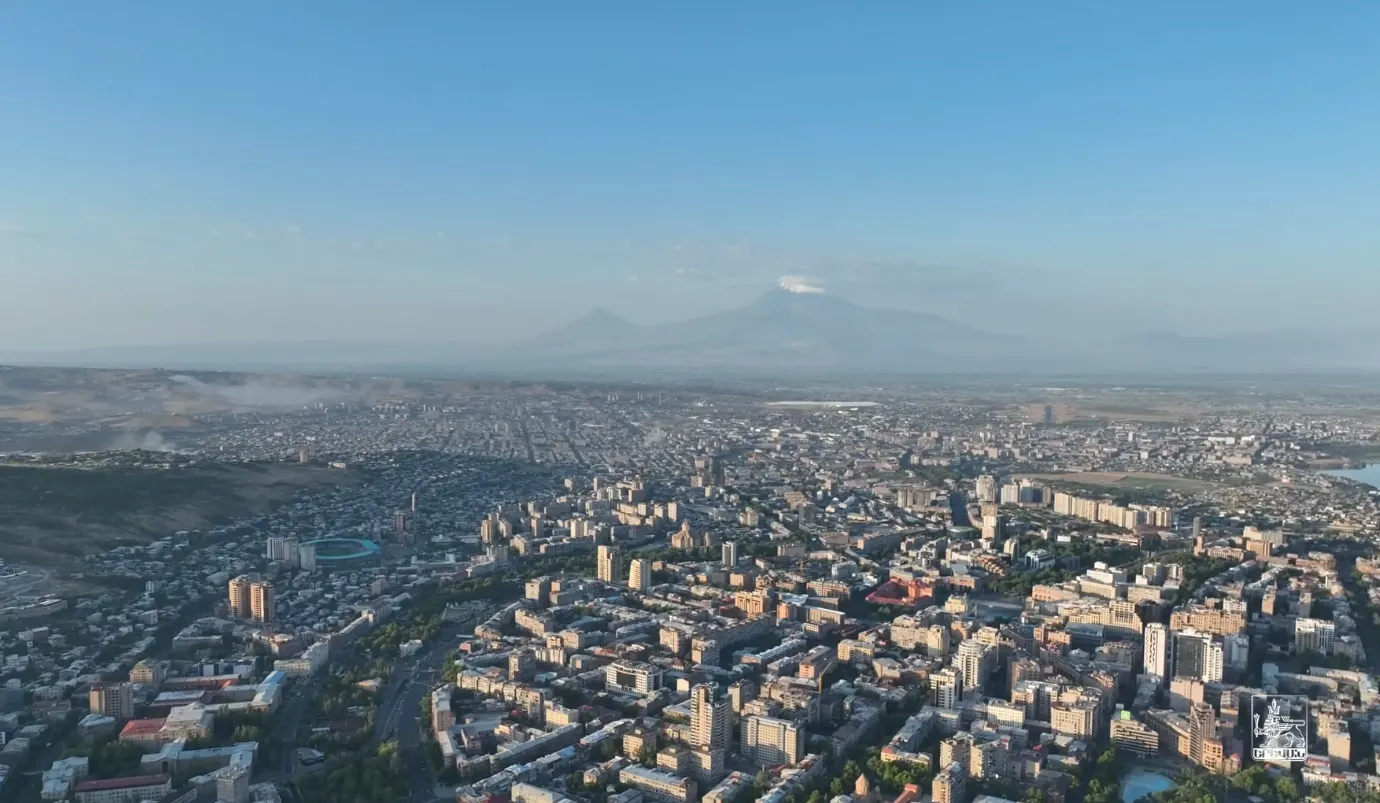
Yerevan’s deployment of a city-wide air quality monitoring network using Clarity Node-S sensors highlights the transformative change that can happen when a city embraces innovation to solve a modern urban challenge. In just over a year, Yerevan transformed its approach to air pollution – from reactive and sporadic (manual measurements and citizen complaints) to proactive and data-driven.
Cities around the world can take inspiration from Yerevan’s example: with the right strategy, partnerships, and modern technology, it’s possible to tackle even the most daunting environmental problems. The combination of political commitment, smart technology, and community engagement has put Yerevan on a path to a healthier future."
